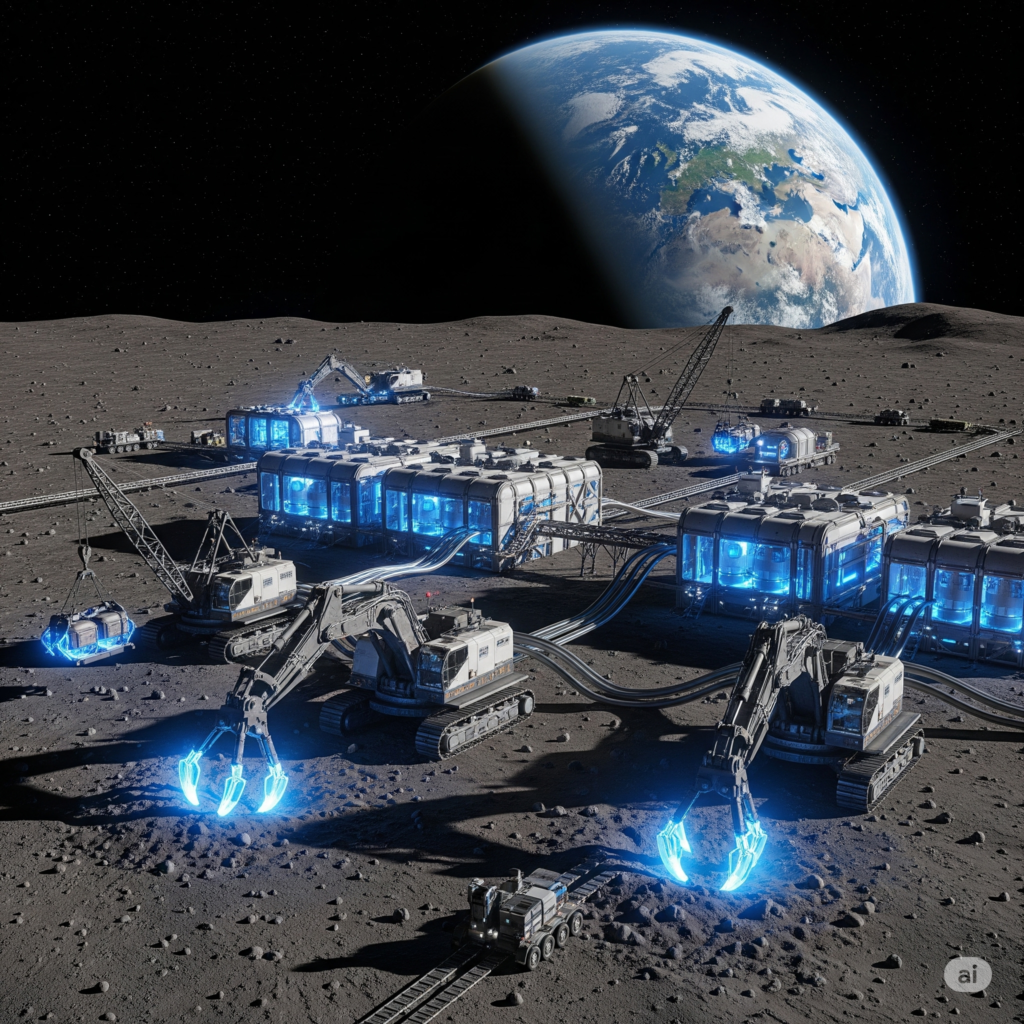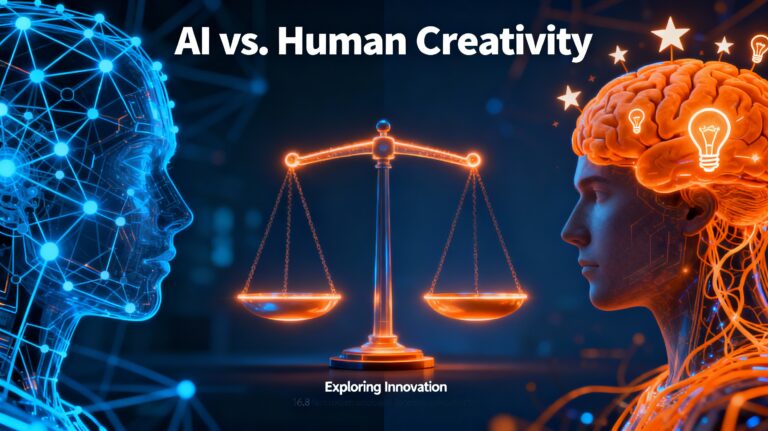Key Highlights
- Historic Achievement: India became the 4th nation to achieve lunar soft landing and first to land near Moon’s south pole with Chandrayaan-3, demonstrating cost-effective space capabilities
- Economic Transformation: Space economy targets growth from $8.4 billion to $44 billion by 2033, with 250+ startups and ₹1,000 crore VC fund driving private sector participation
- Strategic Resources: Moon’s Helium-3 reserves could provide 7 times the 21st century’s energy needs, while water ice enables sustainable lunar habitation and deep space exploration
- Geopolitical Positioning: India signed Artemis Accords while maintaining strategic autonomy, balancing US cooperation with independent lunar program under Space Vision 2047
- Governance Challenges: Space debris risks and inadequate international legal frameworks require updated treaties addressing resource extraction, environmental protection, and equitable benefit-sharing
India’s successful Chandrayaan-3 lunar landing on August 23, 2023, marked a pivotal moment in global space exploration, positioning the nation as the fourth country to achieve a soft lunar landing and the first to reach the Moon’s south pole region. This achievement reflects more than scientific prowess—it embodies India’s strategic vision for technological sovereignty, economic opportunity, and geopolitical influence in the emerging space economy.
Strategic Significance of Lunar Exploration
Scientific and Technological Advancement
Moon exploration serves as a catalyst for indigenous innovation and technological self-reliance. ISRO’s lunar missions have demonstrated India’s capability to conduct cost-effective space operations while maintaining scientific rigor. The Chandrayaan program has discovered water molecules on the lunar surface, identified spinel minerals, and provided evidence of recent volcanism.
The Moon functions as a natural laboratory for understanding Earth’s early history and evolution. Lunar water analysis provides crucial insights into the impact history of the Moon and the abundance of comets and asteroids in the early solar system. These discoveries contribute to broader scientific understanding of planetary formation and climate evolution models.
Atmanirbhar Bharat and Indigenous Innovation
India’s space reforms, including the establishment of IN-SPACe (Indian National Space Promotion and Authorization Center) and NewSpace India Limited (NSIL), exemplify the shift toward private sector participation. The Indian Space Policy 2023 enables private companies to engage in satellite development, launches, and exploration.
Currently valued at $8.4 billion, India’s space economy targets $44 billion by 2033, aiming for 7-8% global market share. The government’s ₹1,000 crore Venture Capital Fund under IN-SPACe supports approximately 250 space startups operating across various segments.
Economic Potential of Lunar Resources
Helium-3: Clean Energy Revolution

Helium-3 (He-3) represents one of the Moon’s most valuable resources for future energy production. Unlike Earth, where only 100 kg of He-3 is available, the Moon contains an estimated million tonnes within the first 3 meters of its surface. When fused with deuterium, He-3 could produce 19 million GWyr of electrical energy—approximately 7 times the projected energy consumption for the entire 21st century.
Companies like Interlune are developing prototype excavators capable of processing 110 tons of lunar soil per hour to extract He-3 directly on the Moon. With an estimated value of $20 million per 2.2 pounds, He-3 could revolutionize both nuclear fusion energy and quantum computing applications.
Water Ice and In-Situ Resource Utilization
The Moon’s south pole contains water ice in permanently shadowed craters, crucial for future lunar habitation. This water can provide life support, radiation shielding, and rocket propellant components for deep space missions. Analysis indicates 600 million metric tonnes of water-ice near the north pole alone.
Lunar regolith offers additional resources including oxygen, metals, and rare earth elements. The KREEP (potassium, rare earth elements, phosphorus) zone contains enhanced concentrations of technologically important materials.
Geopolitical Dynamics and Strategic Competition
Artemis Accords and International Alignment
India’s signing of the Artemis Accords on June 21, 2023, as the 27th signatory represents a strategic alignment with US-led space governance frameworks. However, India maintains that it is not a participant in the NASA-led Artemis Programme itself, preserving policy independence while engaging in international cooperation.
The Accords establish principles for peaceful space exploration and resource utilization, though they conflict with the Common Heritage of Mankind (CHM) concept. India must carefully balance participation benefits against potential constraints on sovereign space activities.
China’s Chang’e Missions and Space Competition
China’s Chang’e program demonstrates aggressive lunar exploration capabilities. The Chang’e-6 mission successfully returned 1.731 kg of lunar samples from the Moon’s far side in June 2024, making China the third country to discover new lunar minerals. China’s four-phase lunar program includes establishing an International Lunar Research Station by the 2030s.
This competition intensifies pressure on India to accelerate its lunar program while maintaining cost-effectiveness and technological innovation advantages.
Dual-Use Technologies and Defense Applications
Navigation and Communication Systems
Lunar missions enhance dual-use technologies with both civilian and military applications. India’s Indian Regional Navigation Satellite System (IRNSS) and communication satellites provide strategic defense capabilities while supporting civilian infrastructure.
Space-based navigation and surveillance systems developed through lunar exploration programs strengthen national security and border monitoring capabilities. These technologies contribute to India’s net security provider role in the Indo-Pacific region.
Technology Transfer and Innovation Spillovers
Lunar exploration drives innovation in materials science, robotics, and artificial intelligence. Technologies developed for lunar missions find applications in terrestrial industries, from automotive to healthcare sectors.
Challenges and Governance Gaps
Space Debris and Environmental Concerns
The proliferation of space debris poses significant risks to lunar missions and orbital operations. The European Space Agency tracks over 30,000 pieces of space debris, with millions of smaller particles threatening spacecraft. India’s 2019 Mission Shakti ASAT test generated substantial debris, highlighting the need for responsible space conduct.
The Kessler Syndrome risk—where collisions create cascading debris events—could permanently damage Earth’s orbital environment without proper space traffic management.
International Legal Framework Limitations
Current space law, including the 1967 Outer Space Treaty, provides insufficient guidance for modern challenges like resource extraction and debris mitigation. The treaty’s general provisions require updating to address contemporary space activities.
UNCOPUOS Debris Mitigation Guidelines supplement treaty obligations, but lack binding enforcement mechanisms. The absence of comprehensive space governance frameworks creates regulatory uncertainty for commercial lunar operations.
Ethical and Equitable Access Concerns
Questions remain about equitable benefit-sharing from lunar resources. While the Outer Space Treaty declares space the “province of all mankind,” practical resource utilization may disproportionately benefit spacefaring nations.
India’s approach must balance commercial interests with international obligations and development cooperation principles.
Way Forward: Sustainable Lunar Development
Enhanced International Cooperation
India should strengthen multilateral partnerships while preserving strategic autonomy. Collaboration with European Space Agency, Japan Aerospace Exploration Agency, and other partners can share costs and risks while avoiding excessive dependence on any single nation.
Technology transfer agreements and joint missions can accelerate capabilities development while maintaining indigenous innovation priorities.
Regulatory Framework Development
India needs comprehensive national space legislation addressing resource rights, liability allocation, and environmental protection. Clear regulatory frameworks will attract private investment while ensuring responsible development.
Public-private partnerships require well-defined risk-sharing mechanisms and intellectual property protections to encourage innovation.
Sustainable Development Principles
Future lunar activities must incorporate environmental impact assessments and debris mitigation strategies. India’s lunar program should exemplify responsible space exploration practices.
Capacity building initiatives can share lunar exploration benefits with developing nations, reinforcing India’s leadership in South-South cooperation.
Global Space Treaties and Ethical Frameworks
The rapidly evolving space economy requires updated international governance mechanisms. Key priorities include:
Comprehensive Space Governance
- Binding debris mitigation standards with enforcement mechanisms
- Resource extraction guidelines balancing commercial interests with equitable access
- Technology transfer frameworks promoting capacity building
- Environmental protection protocols for lunar and asteroid mining
Ethical Space Development
- Benefit-sharing mechanisms ensuring developing country participation
- Cultural heritage protection for historically significant lunar sites
- Sustainable development standards preventing lunar environmental degradation
- Peaceful use obligations preventing space militarization
Conclusion
Moon exploration represents a strategic inflection point for India’s emergence as a global space power. By leveraging indigenous innovation, cost-effective operations, and strategic partnerships, India can secure significant advantages in the emerging lunar economy while contributing to sustainable space development.
The convergence of scientific discovery, economic opportunity, and strategic competition makes lunar exploration essential for India’s long-term technological sovereignty and geopolitical influence. Success requires balancing commercial interests with international obligations, environmental responsibility with economic growth, and strategic autonomy with multilateral cooperation.
As humanity enters a new era of space resource utilization, India’s lunar program exemplifies how middle powers can shape global governance frameworks while advancing national development objectives. The Moon’s resources offer transformative potential for clean energy, space exploration, and scientific discovery—but only through responsible, sustainable, and equitable development approaches.
India’s lunar journey reflects its broader multipolar world vision: leading through innovation, cooperating through strength, and contributing to global prosperity while securing national interests. The success of this approach will determine not only India’s space future but also the trajectory of international space cooperation in the 21st century.
Possible Mains Questions
- “Moon exploration holds strategic significance for India’s technological sovereignty and economic development.” Analyze the role of lunar missions in strengthening Atmanirbhar Bharat while examining the challenges of space debris and international governance. (250 words)
- Evaluate the potential of lunar resources like Helium-3 and water ice for India’s energy security and space exploration goals. How can India balance commercial exploitation with international obligations under existing space law? (250 words)
- “India’s participation in the Artemis Accords reflects its strategic autonomy in space diplomacy.” Critically examine India’s approach to lunar exploration amid US-China space competition and the need for multilateral cooperation. (250 words)









+ There are no comments
Add yours